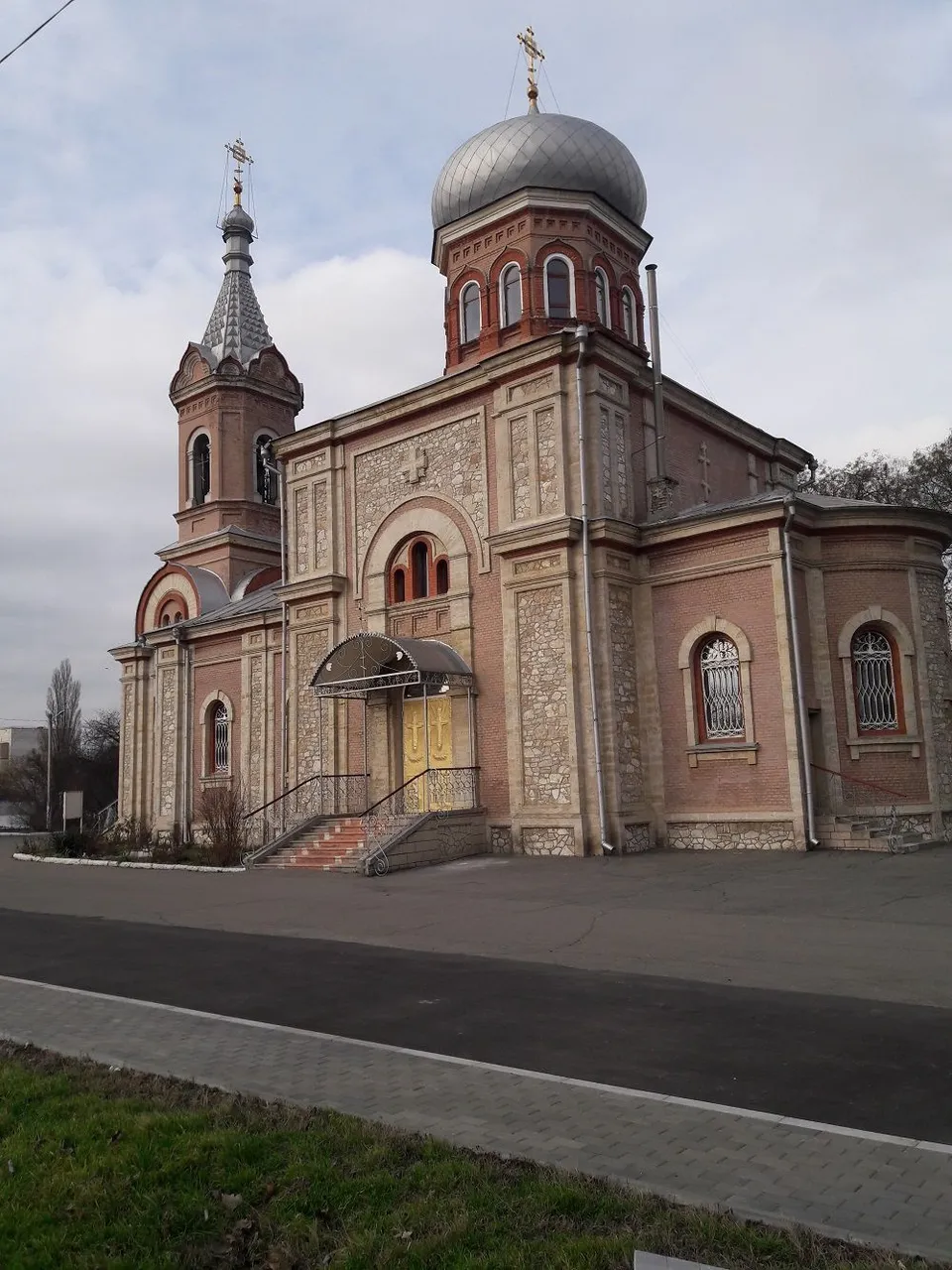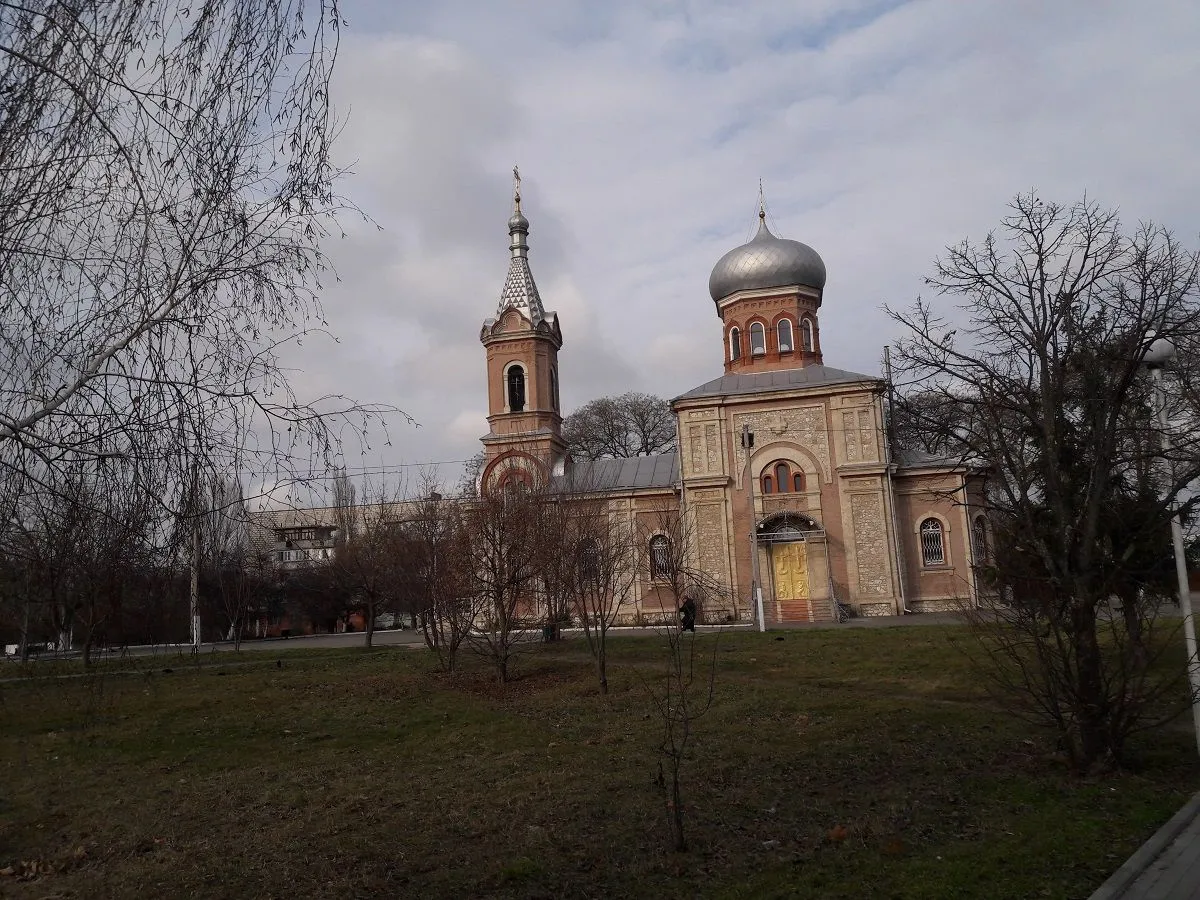We continue the walk with Izmail and this time we will tell about one of the temples of the city, the Church of Holy Myrrhbearers Women. It is located along Shevchenko Street, and very near Kulikovo Field, where now they have made a small and pleasant square. The temple is restored and looks simply amazing, it is difficult to resist not to make a photo of the facade.

The church itself begins its history in the middle of the XIX century. Its construction began in the distant 1849-m. The place was chosen a huge city cemetery, where local merchants Tulchianov built a chapel over an ancient family crypt. Somewhat later (according to some sources in the 60th years of the same century), the chapel was transformed and consecrated, after which it became known as the church of the Holy Martyr Theodore Tiron. And already in the 64th the first service was conducted here.
Soon Joseph Glyzyan, who was the rector of the Holy Protection Cathedral, wrote an appeal to the Chisinau spiritual consistory about the fact that there is not enough room in the church for a full-fledged service. He asked about the building of the temple in the place where the cemetery was located. Glyzyan repeatedly satisfied with the refusals, the new church did not want to build until in the beginning of the 83rd Archbishop Sergius approved the construction. The new stone church was called the Holy Myrrhbearers.
In those days, the churches were mainly built by donations from the local population. Thus, 26 431 rubles were collected for the erection of the new church. and 92 kopecks. A significant part of these collections was donated by local merchants Ivan Kirillov and Timofei Avraamov. It is said that it was thanks to these two merchants that the construction was completed, since they supported the works with all their might and even borrowed money from other merchants. To create the project and make estimates, the diocesan architect Mikhail Stepanovich Serazinsky was chosen.

The stone for the church was mined in the fortress of Izmail, the walls of the building were smashed, they were transferred to a new place, and then the temple was built. You can say that the ruined fortress migrated to the temple. Most likely, the work was hellish, as the lime mortar was firmly adhered to the stone, because this fortification building, built it for centuries, so that no enemy could break through the walls.
For fourteen years the church was built, only by the middle of the summer of 1897 the Kishinevskaya Consistory was informed that the construction work had been completed. A little later the provincial architect was allowed to proceed to the next stage - consecration. Actually, they did not drag on this for a long time, and already on October 5 of the same year the dean of the first district of the Izmail district, Protopriest Simeon Topalov consecrated the church and began to conduct service there.

During the Soviet era, the church functioned for dozens of years until the cemetery was closed. In 1961, Izmail City Executive Committee decided to close the church and turn it into a storage room. No wonder that almost all the property that was in the church at that time was blotted out. Only the elements of the iconostasis and the three cottages in the St. Nicholas Cathedral of the Intercession Cathedral have been preserved. Since these days the temple has not functioned and for almost three decades has come to a deplorable state.
Return the church to the believers and resume work only decided by 1989. Two years later, the restoration work began under the guidance of Archpriest John. At that time, only the walls, doors, floors and windows were left from the temple, even the foundation was destroyed. It was not a superficial repair, but a major restoration, where almost everything was remade. This was also collected donations from local residents.

Problems began when it came to the paintings of the restored church, because in the city it was impossible to find a specialist of the right profile. However, after a long search for the master in many cities of Ukraine and even Chisinau, Father John was found the Volyn artist Alexander Burbela. Behind Alexander Ivanovich was forty two years of experience working on church paintings, before he painted temples in several large Russian cities.
Another problem in this regard was that the church as such did not have traditions, so Father John also considered the concept. During the large-scale restoration the abbot had to visit many cities of our country and abroad. Later, A. Burbel and his sons Grigory and Nicholas painted the temple. They were helped by artists from Izmail Ivan Shishman and Peter Chakir.

To date, the church has been restored and fully functioning, here regularly conduct services. The Church of the Holy Myrrhbearers is a striking example of the desire of the local population and church ministers to preserve the history of their land and buildings in particular. Thanks to these people, the temple continues to function until our time.
Author of the article: _ @ riverside_. Photo: _ @ vredina_
Editing: _redkollegiya community "VP-Odessa-Mother" _
Editor in Chief: @jurgan
We are on the GOLOS
